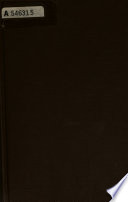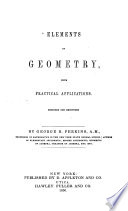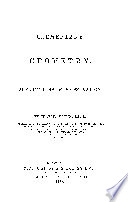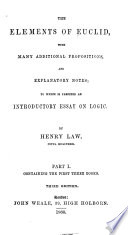 | Euclides - 1845 - 546 pages
...and the remaining angle at C equal to the remaining angle at F. AD EF For if the angles ABC, DEF be not equal, one of them must be greater than the other : let ABC be the greater, and at the point B, in the straight line AB, make the angle ABG equal to the angle... | |
 | George Roberts Perkins - Geometry - 1847 - 326 pages
...parallel lines AB, CD ; then will A— F/ * the angle AFG be equal to the alternate angle DGF. c~~ For, if they are not equal, one of them must be greater than the other : let it be DGF, for instance, which is the greater, if possible ; and conceive the line GB to be drawn,... | |
 | George Roberts Perkins - Geometry - 1850 - 332 pages
...the two parallel lines AB, CD ; then / will the angle AFG be equal A to the alternate angle DGF. c For, if they are not equal, one of them must be greater ; than the other: let it be DGF, for instance, which is the greater, if possible; and conceive the line GB to be drawn, culling... | |
 | Charles Davies - Geometry - 1850 - 218 pages
...angle A be equal to the angle B : then will the side BC be equal to the side AC* For, if the two sides are not equal, one of them must be greater than the other. Suppose AC to be the greater side. Then take a part AD equal to BC. Now, in the two triangles A,DB... | |
 | Charles Davies - Geometry - 1850 - 238 pages
...angle A be equal to the angle B : then will the side BC be equal to the side AC. For, if the two sides are not equal, one of them must be greater than the other. Suppose AC to be the greater side. Then take a part AD equal to BC. Now, in the two triangles ADB and... | |
 | Royal Military Academy, Woolwich - Mathematics - 1853 - 400 pages
...same ratio to each of the magnitudes A and B : A is equal to B. For, if they are not, one of them is greater than the other : let A be the greater ; therefore, as was shown in Prop. 8th, there is some multiple F of C, and some equimultiples E and D, of B and A, such, that F... | |
 | Euclides - Geometry - 1853 - 176 pages
...same ratio to each of the magnitudes a and b ) a is equal to b. For, if they are not, one of them is greater than the other ; let a be the greater ; therefore as was shewn in Prop. 8th, there is some multiple f of c, and some equimultiples e and d, of b and a such,... | |
 | Euclides - 1855 - 270 pages
...of it are toge- A \& ,. ther equal to two right angles. \ For, if the alternate angles AGH, GHD be not \ equal, one of them must be greater than the other. \ Let the angle AGH be greater than the angle F GHD. To each of these unequals, add the angle BGIL Then the... | |
 | Eucleides - 1860 - 396 pages
...another. Let A, B have each of them the same ratio to C ; then A shall be equal to B. DEMONSTRATION. For, if they are not equal, one of them must be greater than the other : let A be the greater : then, by what was shown in the preceding proposition, there are some equimultiples of A and B, and... | |
 | James Elliot - 1860 - 252 pages
...then we must have recourse to a different mode of demonstration, proceeding thus, — If A is not = a, one of them must be greater than the other. Let A be the greater. Then A — a is a real positive quantity. Now, since A + Bx + Cx2 + &c. = a + bx + ex2 + &c., we have... | |
| |